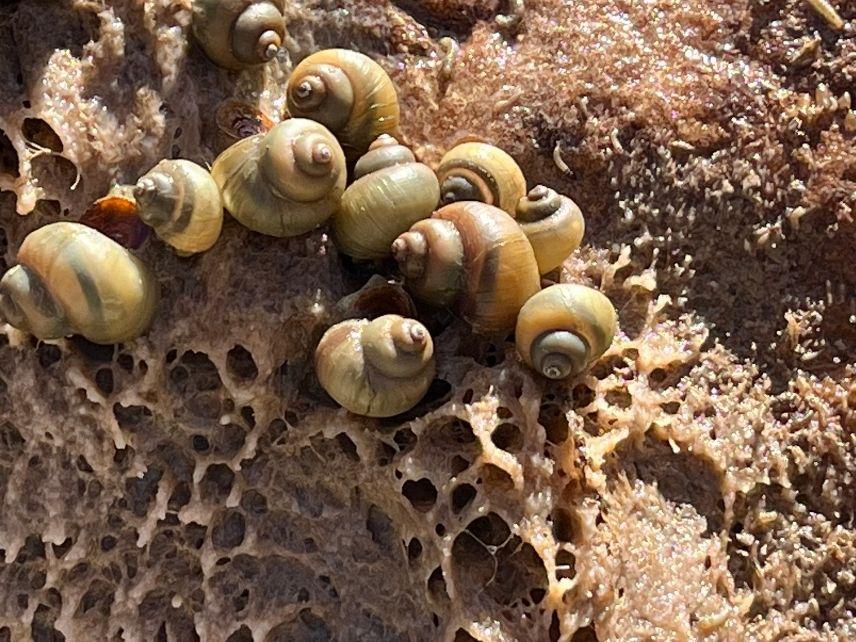The critically endangered snails were found in the Darling (Baaka) River in Wilcannia, in western New South Wales.
The Darling River snail was once common and widespread throughout the Darling (Baaka) River system but, numbers have been declining since the 1960s due to habitat loss, water flow changes and an increase in carp, which eat the snails.
Archaeologist, Dr Sarah Martin, was collecting oral histories that document the First Nations knowledge and values of fish traps in the Wilcannia area as part of a Murray-Darling Water and Environment Research Program (MD-WERP) project underway in the area. About 25 people were interviewed, including Barkandji elders and young people.

Interviews explored the physical and social changes to fishing and fish traps. Locals spoke about the different species living in the river and how these have changed over time. Recounts suggest mussels disappeared from the local waterways around 2018 to 2019.

River snails seem to have become locally extinct much earlier. Older Barkandji people recalled eating the snails and using them as bait in the past but said they had disappeared many years ago. However, in an MD-WERP project interview, a local Wilcannia teenager said she had seen snails in the nearby weir.
After hearing this, the team of Wilcannia Barkandji MD-WERP researchers who had been recording and maintaining traditional Barkandji stone fish traps, were excited to investigate. They waded into the water and located the secretive snail on and under the weir wall rocks. This remarkable discovery provides hope for future populations of Darling River snails.

This project highlights the resilience of the Basin’s riverine ecosystem under the combined drivers of extreme climate events and development of the river system. It also emphasises the benefits of working in partnership with First Nations people. Locals are often the first to know what is happening in the Basin. They have the passion and skills to manage the environment sustainably. Sharing this knowledge, passed down through families, helps us to manage Rivers, for generations.
This research is supported through funding from the Australian Government Murray–Darling Water and Environment Research Program (MD-WERP).